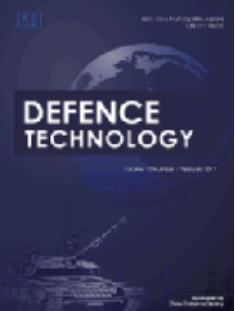Damage prediction of rear plate in Whipple shields based on machine learning method
IF 5.9
Q1 ENGINEERING, MULTIDISCIPLINARY
引用次数: 0
Abstract
A typical Whipple shield consists of double-layered plates with a certain gap. The space debris impacts the outer plate and is broken into a debris cloud (shattered, molten, vaporized) with dispersed energy and momentum, which reduces the risk of penetrating the bulkhead. In the realm of hypervelocity impact, strain rate (> 105 s−1) effects are negligible, and fluid dynamics is employed to describe the impact process. Efficient numerical tools for precisely predicting the damage degree can greatly accelerate the design and optimization of advanced protective structures. Current hypervelocity impact research primarily focuses on the interaction between projectile and front plate and the movement of debris cloud. However, the damage mechanism of debris cloud impacts on rear plates - the critical threat component - remains underexplored owing to complex multi-physics processes and prohibitive computational costs. Existing approaches, ranging from semi-empirical equations to a machine learning-based ballistic limit prediction method, are constrained to binary penetration classification. Alternatively, the uneven data from experiments and simulations caused these methods to be ineffective when the projectile has irregular shapes and complicate flight attitude. Therefore, it is urgent to develop a new damage prediction method for predicting the rear plate damage, which can help to gain a deeper understanding of the damage mechanism. In this study, a machine learning (ML) method is developed to predict the damage distribution in the rear plate. Based on the unit velocity space, the discretized information of debris cloud and rear plate damage from rare simulation cases is used as input data for training the ML models, while the generalization ability for damage distribution prediction is tested by other simulation cases with different attack angles. The results demonstrate that the training and prediction accuracies using the Random Forest (RF) algorithm significantly surpass those using Artificial Neural Networks (ANNs) and Support Vector Machine (SVM). The RF-based model effectively identifies damage features in sparsely distributed debris cloud and cumulative effect. This study establishes an expandable new dataset that accommodates additional parameters to improve the prediction accuracy. Results demonstrate the model's ability to overcome data imbalance limitations through debris cloud features, enabling rapid and accurate rear plate damage prediction across wider scenarios with minimal data requirements.
基于机器学习方法的惠普尔盾后板损伤预测
典型的惠普尔屏蔽由具有一定间隙的双层板组成。空间碎片撞击外层板,并以分散的能量和动量破碎成碎片云(粉碎、熔化、汽化),从而降低了穿透舱壁的风险。在超高速冲击领域,应变率(>;105 s−1)的影响可以忽略不计,并采用流体动力学来描述冲击过程。精确预测损伤程度的有效数值工具可以大大加快先进防护结构的设计和优化。目前的超高速碰撞研究主要集中在弹丸与前板的相互作用和碎片云的运动上。然而,由于复杂的多物理过程和高昂的计算成本,碎片云对关键威胁部件后板的损伤机制仍未得到充分研究。现有的方法,从半经验方程到基于机器学习的弹道极限预测方法,都局限于二元穿透分类。另外,当弹丸形状不规则、飞行姿态复杂时,实验和仿真数据的不均匀导致这些方法无效。因此,迫切需要开发一种新的损伤预测方法来预测后板损伤,从而有助于更深入地了解后板损伤机理。本文提出了一种基于机器学习的后板损伤预测方法。基于单位速度空间,将罕见仿真案例中碎片云和后板损伤的离散化信息作为ML模型训练的输入数据,同时通过其他不同攻角的仿真案例检验损伤分布预测的泛化能力。结果表明,随机森林(RF)算法的训练和预测精度明显优于人工神经网络(ann)和支持向量机(SVM)。基于rf的模型能有效识别稀疏分布碎片云和累积效应中的损伤特征。本研究建立了一个可扩展的新数据集,可容纳额外的参数,以提高预测精度。结果表明,该模型能够通过碎片云特征克服数据不平衡的限制,以最小的数据需求在更广泛的情况下实现快速准确的后板损伤预测。
本文章由计算机程序翻译,如有差异,请以英文原文为准。
求助全文
约1分钟内获得全文
求助全文
来源期刊

Defence Technology(防务技术)
Mechanical Engineering, Control and Systems Engineering, Industrial and Manufacturing Engineering
CiteScore
8.70
自引率
0.00%
发文量
728
审稿时长
25 days
期刊介绍:
Defence Technology, a peer reviewed journal, is published monthly and aims to become the best international academic exchange platform for the research related to defence technology. It publishes original research papers having direct bearing on defence, with a balanced coverage on analytical, experimental, numerical simulation and applied investigations. It covers various disciplines of science, technology and engineering.
 求助内容:
求助内容: 应助结果提醒方式:
应助结果提醒方式:


